Are you dreaming of adventure? If so, backpacking might just be the perfect way to explore the world. Backpacking is an incredibly rewarding experience that can take you places you never even dreamed were possible. Whether it’s a week-long trip in the nearby countryside or a months-long journey across multiple continents, there are limitless possibilities when it comes to packing up your bags and exploring. And if you’re new to backpacking, don’t worry! We’ve got you covered with 15 great tips on how to backpack like a pro with our ultimate guide – Backpacking 101!
What is Considered Backpacking?
Backpacking is a form of wilderness camping that involves carrying all of your gear, supplies, and shelter on your back in a backpack. This typically involves hiking or walking on trails or in the backcountry, and staying overnight in a tent or other type of camping shelter. The goal of backpacking is to experience the natural environment, explore remote or wilderness areas, and enjoy the physical and mental challenge of self-reliance and self-sufficiency in the outdoors. Some people go for simple overnight trips, and some for multi-day or even multi-week long expeditions. Backpacking can also be a means to reach a specific destination, such as mountain summits, lakes or remote valleys.
Day Hiking vs Backpacking
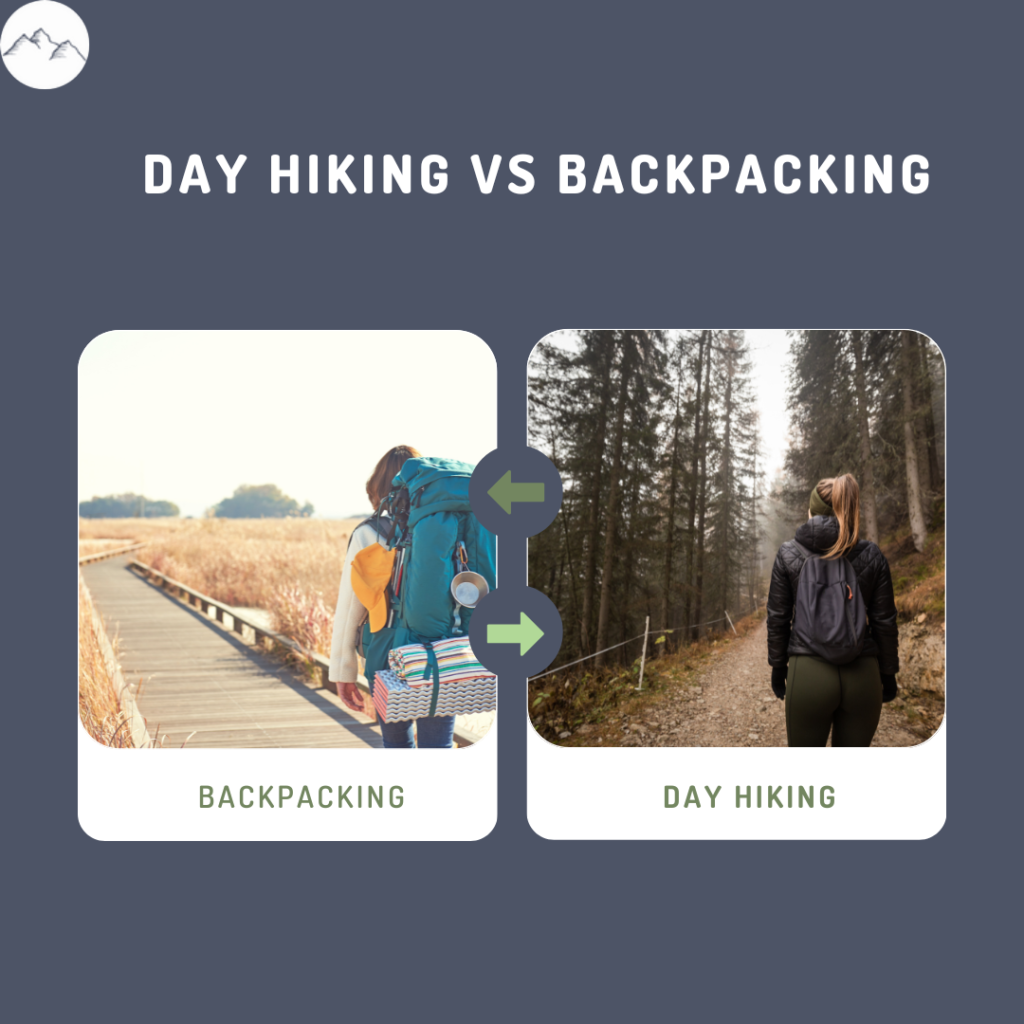
Day hiking and backpacking are both forms of hiking, but they have some key differences.
Day hiking involves going for a hike in the wilderness or the backcountry, usually on established trails, with the intention of returning to the starting point before dark. Day hikers typically carry a small day pack with water, snacks, first-aid kit, and other essentials, but they don’t need to bring camping gear or overnight supplies. The main focus is on the hike itself, and enjoying the scenery, exercise, and fresh air.
Backpacking, on the other hand, involves spending one or more nights in the wilderness, camping in a tent or other shelter, and carrying everything you need for the trip in a backpack. Backpacking trips can be overnight or last for several days, weeks or even months. Backpacking require more gear and supplies than day hiking, such as camping gear, cooking equipment, and enough food and water for the duration of the trip. The main focus is on the journey and wilderness experience, as well as the physical and mental challenges of self-reliance and self-sufficiency in the outdoors.
Starting Small
Starting small when learning to backpack is a good idea for a number of reasons. Here are a few reasons why it’s a good idea to start small:
- Ease of planning: Short, easy trails with lower elevations will typically require less planning and preparation than longer, more challenging trails.
- Less gear: Starting with a shorter trip will require less gear and supplies, which will be easier to manage and carry.
- Less physical exertion: Shorter, easier trails will be less physically demanding, which will allow you to focus on learning the basics of backpacking.
- Less risk: Short, easy trips will have less risk of injury or getting lost, which will give you more confidence and experience.
- Lower cost: Shorter trips generally require less gear and supplies, which can save money for you.
- You will have the chance to test your gear and see what you need to improve or get rid of for next trips.
When starting small, it is also a good idea to choose a trail that is well-maintained and well-marked, and to hike with someone more experienced or take an introductory backpacking course. This will give you an opportunity to learn from someone more experienced and ask questions as they arise.
Planning Ahead
Planning for a backpacking trip requires a bit of time and effort, but it is essential for a safe and successful experience. The first step is to research the trail and area you plan to visit. Look for information about the trail’s difficulty, length, elevation gain, and trail conditions, and check for any trail closures or restrictions. It’s also important to obtain any necessary permits and make reservations if required. A good way to check the different trails to explore would be using Alltrails.com, All trails provide a good incite into the different trails and the difficulties, so you can plan ahead for the trail you’ll be exploring.
Plan your route and itinerary, including campsites, rest stops, and potential side trips. Make sure you have a map and compass and that you know how to use them. Notify a reliable person of your itinerary and expected return, this way they know where you are, and who to call in case of emergency. Finally, don’t forget to consider logistics like transportation to and from the trailhead and parking or shuttle services. By planning ahead and being prepared, you will be able to enjoy your trip with confidence and peace of mind.
Pack Properly
Properly packing for a backpacking trip is important to ensure that you have everything you need, and that your gear is properly organized and protected. Here are some tips for packing for a backpacking trip:
- Make a gear list: Before you start packing, make a list of everything you need to bring, including clothing, camping gear, food, and personal items.
- Prioritize: Prioritize the gear and items that are essential, such as your shelter, sleep system, first aid kit and water filtration system, and pack them first.
- Pack your backpack: Start by packing the heaviest items, such as your shelter and sleep system, close to your back. This will help keep your center of gravity balanced, and keep you more comfortable while hiking.
- Use packing cubes: Use packing cubes or compression bags to keep your gear organized and to save space.
- Bring a good rain cover: A rain cover for your backpack will protect your gear from getting wet in case of unexpected weather.
- Be mindful of your food: Plan your meals in advance and pack enough food for the duration of your trip, taking into account how much space it will take and the weight of the food.
- Pack for layering: Weather can be unpredictable, so pack clothes that you can layer for warmth, and also pack a rain gear or a waterproof jacket.
- Think ahead: Think ahead and pack items you might need in an emergency, such as a headlamp, emergency whistle, and a fire starter.
- Pack your essentials within easy reach: Pack your essentials, like snacks, sunscreen, and a headlamp, within easy reach in your backpack, so you can access them quickly.
By following these tips, you can help ensure that you have everything you need for your trip, and that your gear is properly packed and protected. Remember that less is more, always aim to pack the essentials, and use that as a starting point. And as you gain experience, you’ll get a better sense of what you actually need and what you can leave behind.
Bring the Right Gear
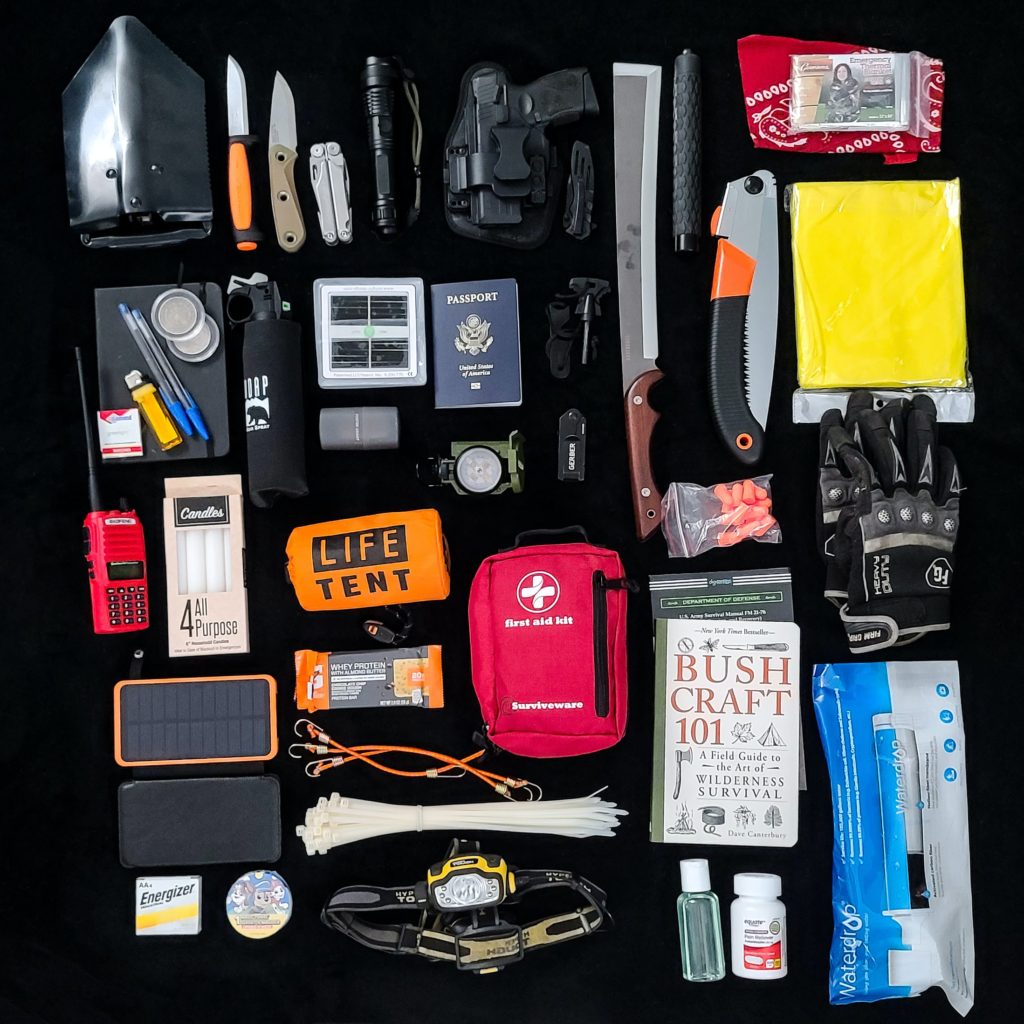
Bringing the right gear for a backpacking trip is essential for a safe and comfortable experience. Here are some of the key pieces of gear that you should consider bringing:
- Backpack: A well-fitted backpack that is appropriate for the length of your trip is crucial. Make sure it has adequate capacity to hold all of your gear and a good frame to distribute the weight of your gear.
- Tent or shelter: a lightweight, waterproof shelter such as a tent or tarp that can protect you from the elements.
- Sleeping bag and sleeping pad: A sleeping bag and pad that are appropriate for the expected temperature range of the area you’ll be in.
- Stove and cookware: you’ll need a camping stove, fuel and cookware to prepare your meals. Here you can find the one I personally use, which is great to begin your journey with.
- Water filtration system or tablets: You’ll need a reliable way to purify water for drinking, whether that’s a water filter, pump or chemical tablets. A great way to filter water would be a life straw, it’s portable and easy to use.
- First aid kit: Pack a small first aid kit that includes essentials like band-aids, antiseptic wipes, pain relievers and any prescription medication.
- Navigation tools: Pack a map and compass, and know how to use them. A GPS device can also be useful.
- Headlamp or flashlight: A headlamp or flashlight, with extra batteries, is essential for night navigation and emergency situations.
- Clothing: pack clothing that can be layered for warmth, and include rain gear and waterproof boots.
- Personal items: pack the items you need for personal hygiene, such as toothbrush, toothpaste, and a small towel.
- Emergency whistle, fire starter, and a knife: These are essential for emergencies, signaling for help and starting a fire. Check out our guide on how to open a pocket knife to learn about the different pocket knives.
Of course, the specific gear you’ll need will depend on the length, location and timing of your trip, so make sure to research the area and forecasted weather before you go, and adjust your gear accordingly
Staying on the Right Trail
Staying on the established trail when backpacking is essential for both safety and preserving the wilderness. When hiking on a trail, you should always stick to the established path and avoid cutting switchbacks or creating new trails. This not only helps to protect the delicate wilderness ecosystem but it also helps to avoid accidents such as getting lost. Additionally, by staying on the trail, you are less likely to damage or disturb the area’s wildlife and vegetation.
It is also important to note that many wilderness areas have designated campsites, and it is important to use these designated sites rather than creating new ones. This helps to minimize impact on the environment, and maintain the integrity of the wilderness area for future generations.
When planning your trip, research the trail and be aware of any regulations or guidelines related to trail usage and campsite use. Make sure to follow Leave No Trace principles and any other guidelines set by the local land management agency.
If you come across a trail that is overgrown or not well-defined, it is best to retrace your steps and stick to a more established path. In some cases, trails may be closed for restoration or other reasons, so it is important to check for any trail closures or restrictions before you go.
In short, staying on the established trail is not only important for your own safety and enjoyment of the wilderness, but also for the preservation of the wilderness and the enjoyment of future generations.
Use Navigation when Backpacking
Navigation is an important aspect of a successful backpacking trip. Here are a few tips for staying on track while in the wilderness:
- Bring a map and compass: A map and compass are essential tools for navigation in the wilderness. Make sure you know how to use them before you set out on your trip.
- Study the map: Before you set out, study the map of the area you’ll be hiking in, familiarize yourself with the terrain, and plan your route.
- Use landmarks: Look for natural landmarks such as peaks, lakes, and valleys to help orient yourself and stay on track.
- Stay aware of your surroundings: Keep an eye out for trail markers, signs, and other indications of the trail as you hike, and use these to help stay on course.
- Use a GPS device: A GPS device can be a useful navigation tool, but make sure you know how to use it and that it’s fully charged. Remember that GPS device can fail, so it’s best to rely on the map and compass as primary navigation tool.
- Check your progress: Check your progress regularly to ensure that you are on track and to make adjustments if necessary.
- Be aware of sunset and plan accordingly: Be aware of the sunset time and make sure you are not caught out in the dark. Have a headlamp ready in case you are hiking after sunset.
In the wilderness, it’s easy to get disoriented, so it’s important to be prepared and stay alert. By following these tips and being prepared, you can navigate confidently and safely during your backpacking trip.
Learning about Backpacking Hygiene
Hygiene is an important aspect of backpacking, as it helps to maintain your health and comfort, as well as minimize impact on the wilderness. Here are some tips for maintaining good hygiene while backpacking:
- Bring hand sanitizer: Carry a small bottle of hand sanitizer to use after using the bathroom or before eating.
- Bring baby wipes or biodegradable wipes: These can be used for quick cleanups and are especially useful if there is no access to soap and water.
- Pack a small towel: A small towel can be used for drying yourself off or for cleaning dishes and utensils.
- Bring a small container of biodegradable soap: You’ll need it to wash dishes and for personal hygiene ( showering is not allowed in most wilderness areas)
- Stay clean: Try to stay as clean as possible, and change into clean clothing as needed.
- Brush your teeth and use mouthwash: Brush your teeth and use mouthwash to keep your mouth clean and freshen your breath.
- Pack a trowel: A small trowel is useful for digging a small hole to bury human waste in areas without toilet facilities.
- Use established toilets when available: Use established toilets and privies if available. These are provided for the specific purpose of maintaining hygiene and minimizing impact.
- Keep a clean campsite: Keep your campsite clean and free of waste and litter.
- Be aware of your impact: Be mindful of how your actions may affect the environment, and practice Leave No Trace principles, such as burying your waste and keeping your campsite clean.
By following these hygiene tips, you can help maintain your health and comfort while minimizing your impact on the wilderness.
Hit the Weights Before Hitting the Trail

Preparing physically for a backpacking trip is important to ensure that you are able to carry the extra weight of a backpack and handle the repetitive motion of hiking. An effective workout strategy should focus on cardiovascular conditioning, which will help increase your stamina and endurance before you add the extra weight of a backpack. A good way to start is by spending time on your feet and gradually increasing the distance and elevation gain of your hikes, this will prepare your body for the demands of the trail. This can be complemented by exercises that target different muscle groups to have a full body workout. Remember to also allow for recovery, and don’t overdo it. Following these guidelines will help you get your body ready for the trail and make your backpacking trip more enjoyable.
Preserve the Environment: Leave No Trace
Leave No Trace is a set of principles and guidelines designed to help minimize the impact of human activities on the wilderness and preserve it for future generations. Here are a few key Leave No Trace principles to keep in mind while backpacking:
- Plan ahead and prepare: Plan your trip, know the regulations and expectations of the area you’ll be visiting, and prepare accordingly.
- Travel and camp on durable surfaces: Stay on established trails, avoid shortcutting switchbacks, and camp in designated sites or on durable surfaces such as rock or sand.
- Dispose of waste properly: Pack out all trash, leftover food, and litter. Use established bathrooms and privies when available. Use a small trowel to bury human waste in areas where there are no toilets.
- Leave what you find: Preserve the natural and historic objects and avoid disturbing wildlife, nests and habitats.
- Minimize campfire impact: Use a camping stove for cooking, rather than making a campfire. If fires are permitted, use established fire rings or fire pans, and burn only small sticks and twigs.
- Respect wildlife: View wildlife from a distance, and avoid approaching or feeding wild animals.
- Be considerate of other visitors: Yield to other hikers, and keep noise levels down.
By following these Leave No Trace principles, you can help to minimize your impact on the wilderness, and preserve it for future generations to enjoy. Remember that these principles apply not only when you are backpacking but also when you are camping, hiking or engaging in any other outdoor activity that takes place in a wilderness area.
Wrapping Up
All in all, backpacking for beginners is a wonderful experience that can be enjoyed if prepared for properly. You need to start small and plan ahead, so you won’t get overwhelmed. Pack only what’s necessary and bring the right gear with you. Most importantly, stay on the trail and practice Leave No Trace principles, be flexible with any changing weather conditions and always remember to have fun! With these few tips in mind, you can choose to embark on your first journey of backpacking without fear or hesitation. So why not challenge yourself today by taking up backpacking with confidence? Are you comfortable going backpacking? Answer that call of nature today and prepare to be enthralled by abundant splendors of mother nature!

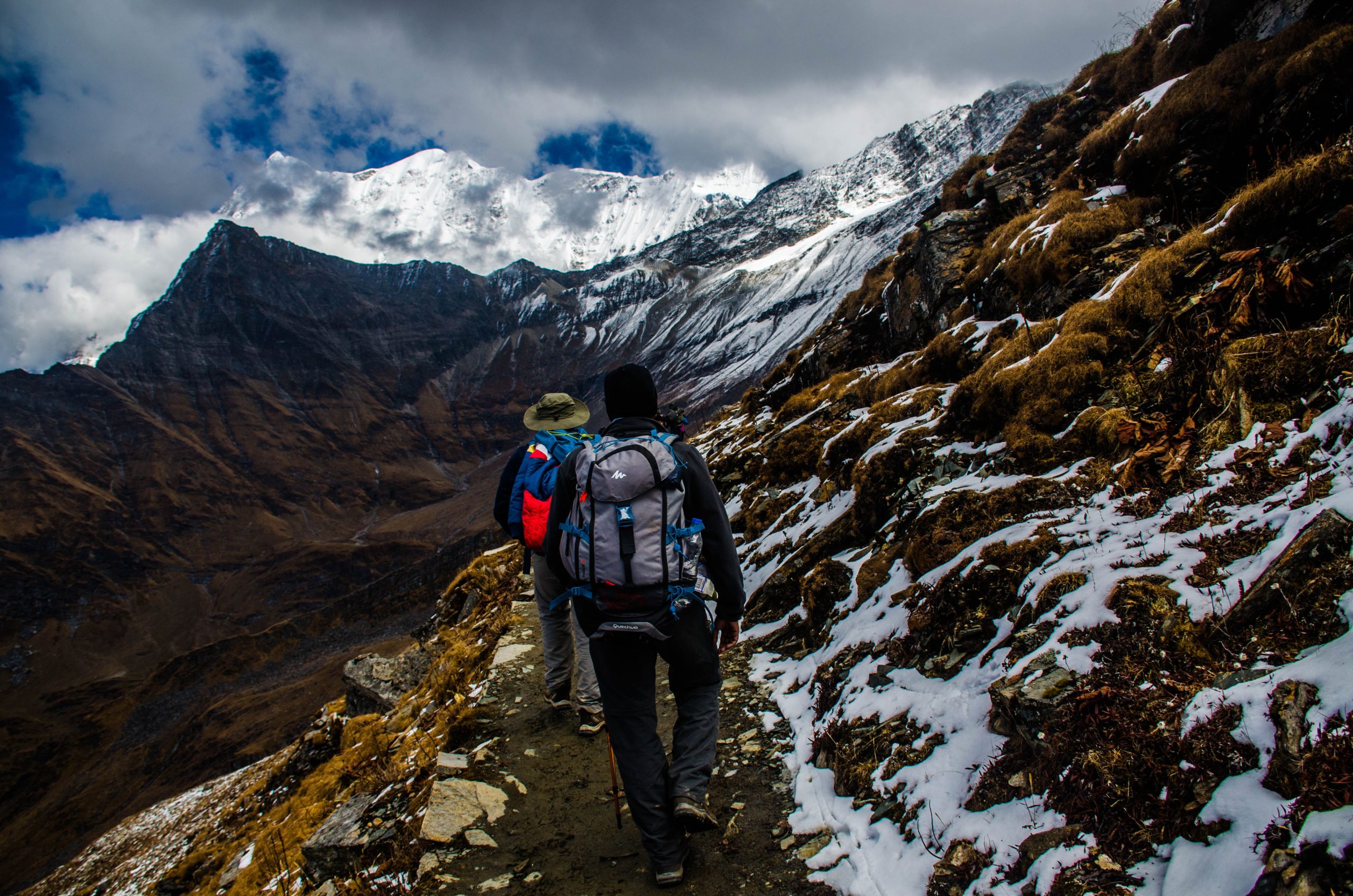
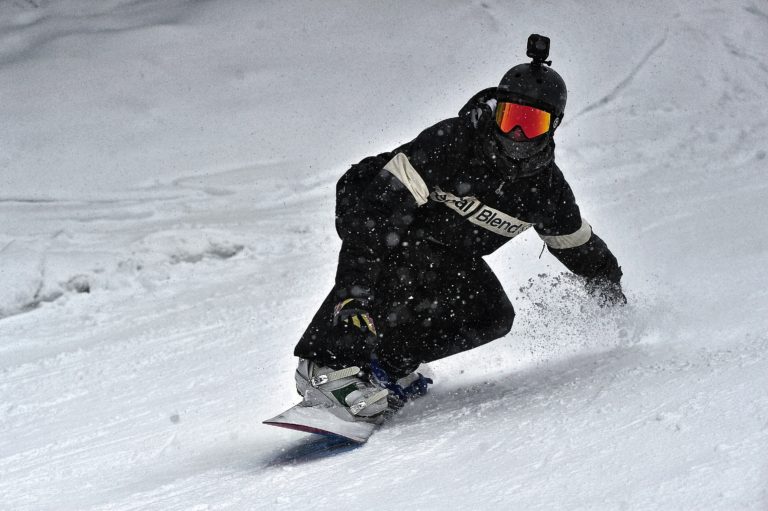
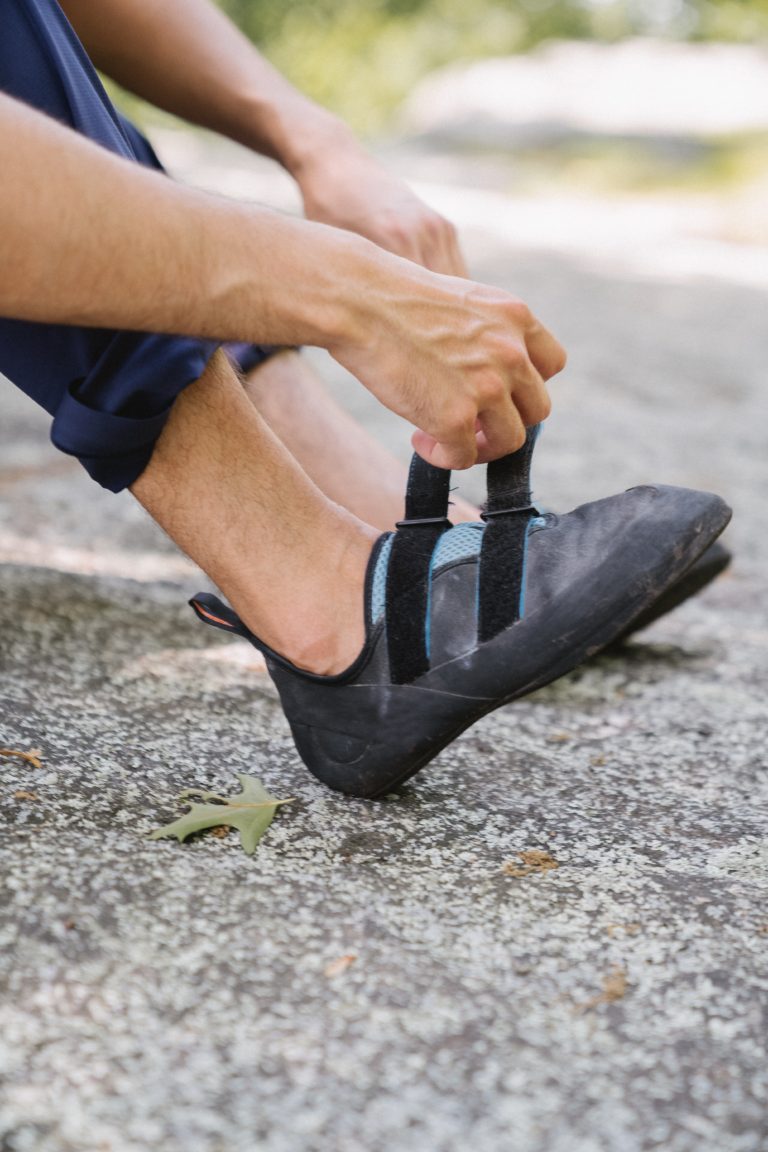
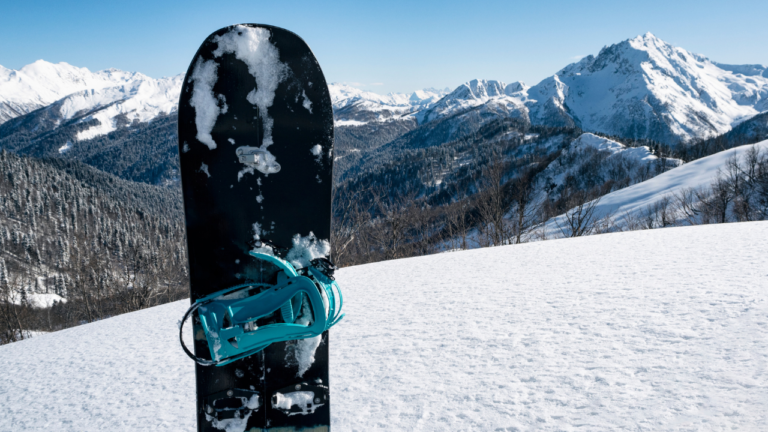
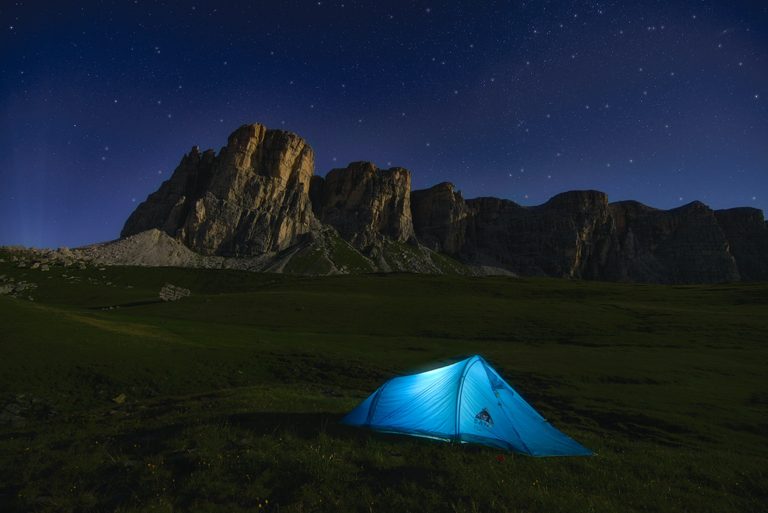
7 Comments